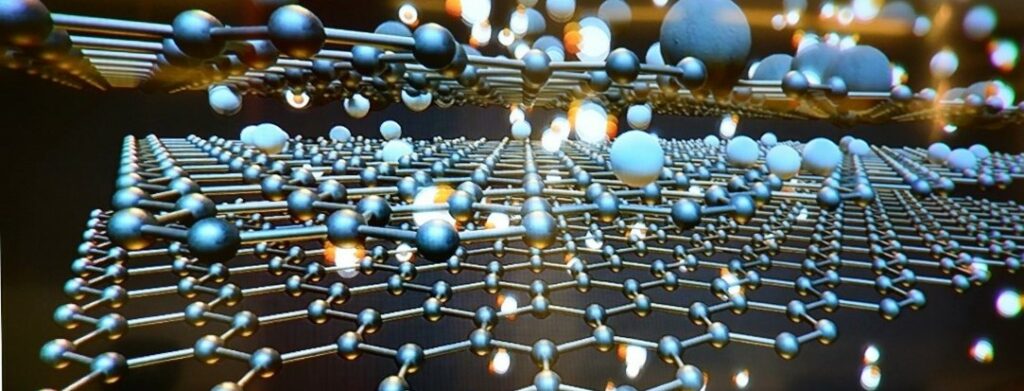
The UK was the first major economy to legally commit to working towards a target of net zero greenhouse gas emissions (GHG) by 2050. This would be no small feat, and to succeed will require technological transformation on an industrial scale.
The big question is, can it be done? Our researchers think so—provided an integrated strategy is implemented.
In their recent Parliamentary Report, Prof. Sir David Hendry and Dr Jennifer Castle describe a range of strategies for cutting emissions that are ambitious, but by no means unachievable.
For brevity’s sake, we will focus on transport, a sector responsible for 21% of total emissions.
This is an area (like many) filled with challenges. While the UK is seeing record sales of electric vehicles (EVs), there are still major hurdles to overcome for widespread adoption: battery performance, charging times, electricity storage and toxic battery waste, to name a few.
So what do our researchers think could be a solution?
Graphene.
Dubbed a “wonder material”, graphene could be ideal as an electricity storage system to feed batteries, so not only improve driving range but significantly cut charging times.
When sheets of graphene are rolled into tubes (known as Graphene-based carbon nanotubes or CNTs), they can act as electrode supercapacitors, and if built into a vehicle’s body panels, they could provide enough energy to power and self-charge a car.
This could be one solution to the UK’s variable electricity supply, which currently has neither the capacity to accommodate a mass transition to electric vehicles nor the storage for a renewables-only generation. To address the former, wind and solar can be expanded, and if EVs are plugged in when not in use, the grid could utilize the stored power within a car battery, creating vehicle-to-grid technology.
Graphene has the potential to be a game changer, but is it too good to be true?
Like many new technologies, graphene production costs are currently high and will need to decrease if it is to become a viable alternative to lithium-ion batteries.
Manufacturing cost has dropped significantly in the past few years – from $300,000 per kilo to just $25 per sheet – but higher levels of production could further drive down the price, potentially making graphene an affordable option in the next few years. Indeed, waste can be converted to graphene in a flash.
The authors state, “There are undoubtedly many technical issues needing solved as to how such a system would work in practice, but there is much ongoing research ( . . . ). The potential benefits of such a power source could be huge as a SIP [sensitive intervention point]”.
A graphene-based battery revolution may still be years away, but there is tantalizing evidence the gap between research and innovation may be narrowing. If successful, the technology could be extended into the wider transport sector, opening the door to a host of possibilities.
With the UK government bringing forward the ban of new petrol and diesel cars by 2030, turning science-fiction into reality cannot happen quickly enough.
 David Hendry, Co-Director, Climate Econometrics
David Hendry, Co-Director, Climate Econometrics
 Angela Wenham, Project Manager, Climate Econometrics
Angela Wenham, Project Manager, Climate Econometrics
